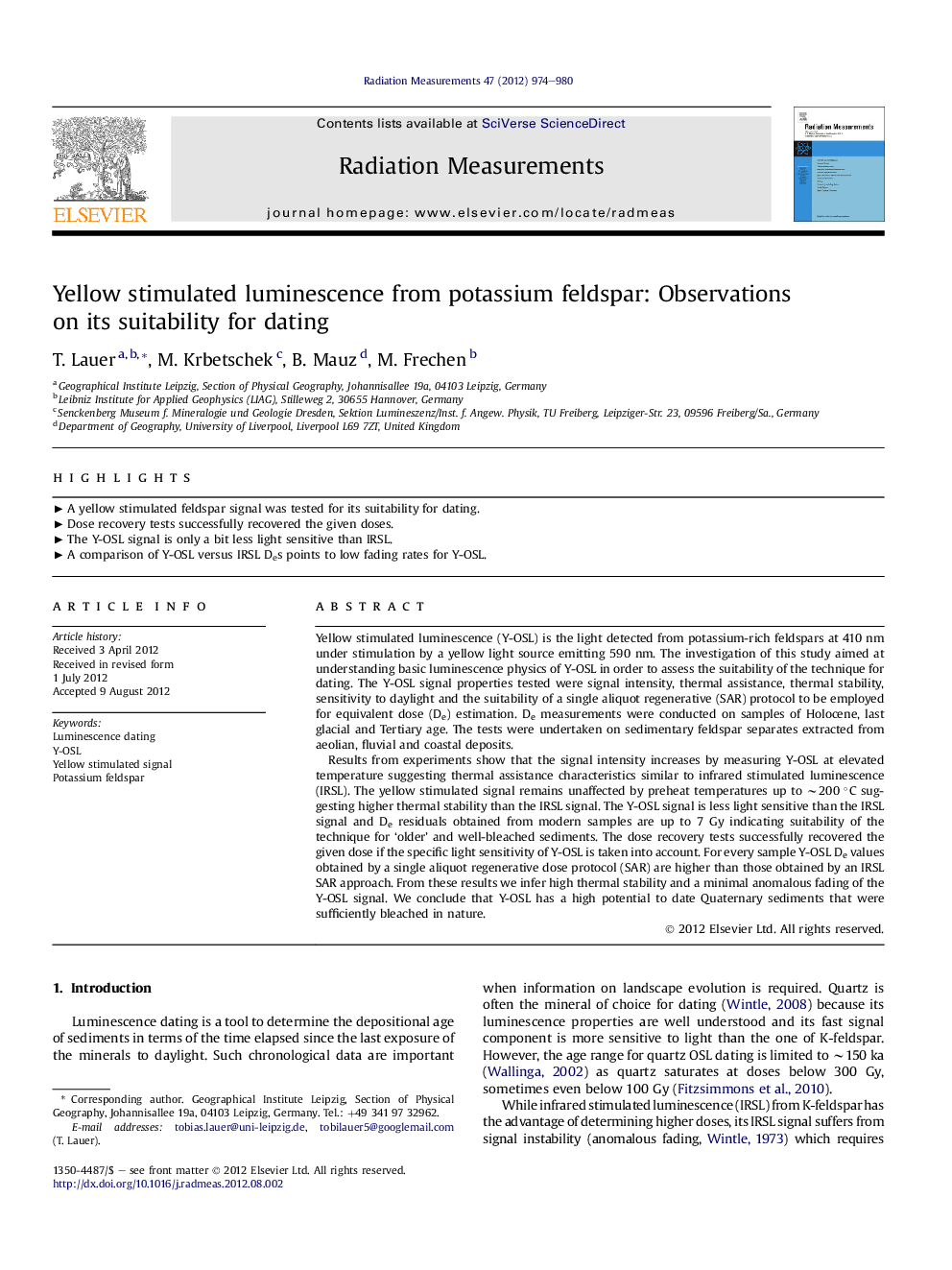| Article ID | Journal | Published Year | Pages | File Type |
|---|---|---|---|---|
| 1881468 | Radiation Measurements | 2012 | 7 Pages |
Yellow stimulated luminescence (Y-OSL) is the light detected from potassium-rich feldspars at 410 nm under stimulation by a yellow light source emitting 590 nm. The investigation of this study aimed at understanding basic luminescence physics of Y-OSL in order to assess the suitability of the technique for dating. The Y-OSL signal properties tested were signal intensity, thermal assistance, thermal stability, sensitivity to daylight and the suitability of a single aliquot regenerative (SAR) protocol to be employed for equivalent dose (De) estimation. De measurements were conducted on samples of Holocene, last glacial and Tertiary age. The tests were undertaken on sedimentary feldspar separates extracted from aeolian, fluvial and coastal deposits.Results from experiments show that the signal intensity increases by measuring Y-OSL at elevated temperature suggesting thermal assistance characteristics similar to infrared stimulated luminescence (IRSL). The yellow stimulated signal remains unaffected by preheat temperatures up to ∼200 °C suggesting higher thermal stability than the IRSL signal. The Y-OSL signal is less light sensitive than the IRSL signal and De residuals obtained from modern samples are up to 7 Gy indicating suitability of the technique for ‘older’ and well-bleached sediments. The dose recovery tests successfully recovered the given dose if the specific light sensitivity of Y-OSL is taken into account. For every sample Y-OSL De values obtained by a single aliquot regenerative dose protocol (SAR) are higher than those obtained by an IRSL SAR approach. From these results we infer high thermal stability and a minimal anomalous fading of the Y-OSL signal. We conclude that Y-OSL has a high potential to date Quaternary sediments that were sufficiently bleached in nature.
► A yellow stimulated feldspar signal was tested for its suitability for dating. ► Dose recovery tests successfully recovered the given doses. ► The Y-OSL signal is only a bit less light sensitive than IRSL. ► A comparison of Y-OSL versus IRSL Des points to low fading rates for Y-OSL.
